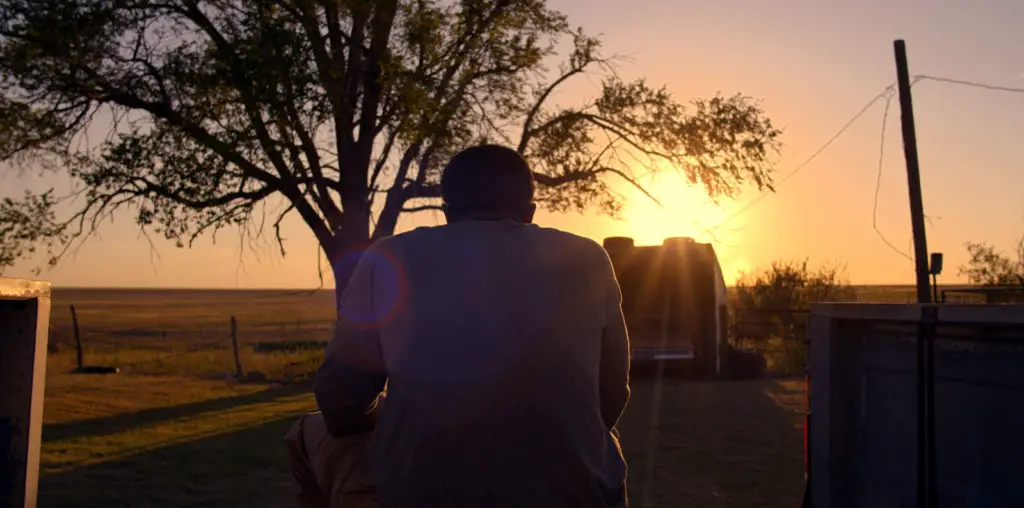
A message to movie lovers: seek out the two-disc DVD called “Discovering Cinema.” Easily the year’s best DVD release, this extraordinary offering traces the evolution of sound recording and color cinematography during the nascent years of the film industry.
Film historians Eric Lange and Serge Bromberg helmed the two documentaries that constitute the discs within “Discovering Cinema.” In “Learning to Talk,” the filmmakers trace the many error-filled trials in Europe and the United States regarding attempts to put sound to the flickering images of the movie screen. In “Movies Dream in Color,” they detail the variety of efforts that were made to bring hues to the monochromatic movies.
Both subjects have been addressed before, both in books and other documentaries about movie history. But the two “Discovering Cinema” documentaries clearly triumph through the rich variety of rare footage tracked down for this presentation.
With “Learning to Talk,” Lange and Bromberg have located such treasured early works as the 1900 sound film of the legendary French actor Coquelin performing a monologue from “Cyrano de Bergerac” (I’ve read about the footage, but this is the first time I’ve actually seen it). There is also a startling appearance by Italian dictator Benito Mussolini, who addresses the camera in flawless English to describe his admiration for the American people.
The filmmakers also unearth very odd European films designed to aid the live orchestra in their musical cues with the silent films. One film actually had a conductor’s baton poking about in the lower-right corner of the screen, while another ran the musical score along the bottom of the screen. In many ways, it is a blessing that the film was made by the Paris-based Lange and Bromberg – they expand the film with European experiments that are often ignored in American documentaries on the creation of the film industry. (A clip of a 1923 sound film experiment made in Denmark is especially startling – who knew the Danes were in the race to create the talkies?)
But the Americans are hardly ignored. Also featured are the early experimental films made by scientist and entrepreneur Theodore Case, who figured out how to marry sound directly into the actual celluloid film (previous attempts tried to synchronize movies with phonograph recordings, often with desultory results). Case’s work is often forgotten by the general movie-going public, so seeing and hearing his work – he often appeared as the charmingly droll on-screen talent – is a priceless experience.
“Movies Dream in Color” details the elaborate attempts to move beyond black-and-white cinematography. Hand-coloring prints was common in the early days of the silent movies, but it was a time-consuming and expensive process. Tinting could be achieved with greater speed and lower costs, but it severely limited the color spectrum. Early color film experiments, including a number of different processes developed by Herbert Kalmus of Technicolor, were hit and miss – including one effort that curiously left blue off the screen entirely.
Beyond these fascinating documentaries, “Discovering Cinema”provides a wealth of special features detailing the surviving extant prints of the early sound and color footage. Of particular notice are two shorts starring the operatic icon Enrico Caruso, Thomas Edison’s surreal 1913 kiddie theater revue “Nursery Favorites,” jazz greats Noble Sissel and Eubie Blake in tuxedo-clad performance (this may have been the first time that African Americans were presented on screen free of derogatory racial stereotyping), a very strange Cinecolor clip of the Marx Brothers and Margaret Dumont rehearsing for a scene in “Animal Crackers” (Harpo is out of costume while Groucho stares in puzzlement at the Cinecolor camera), and a restored version of “La Cucaracha,” the Oscar-winning 1934 short that launched the reign of the three-strip Technicolor process that reigned in Hollywood’s golden era.
“Discovering Cinema” is a treasure at so many levels. As film history, it is invaluable. It is also marvelous as pure entertainment (much of the antique footage is wonderfully funny and often surreal). Rarely have historic documentaries been produced in such a compelling and delightful manner, and the surplus of special features helps to provide a greater appreciation of what went into the technological shaping of films. Anyone with a genuine passion for filmmaking will benefit from this remarkable DVD presentation.
